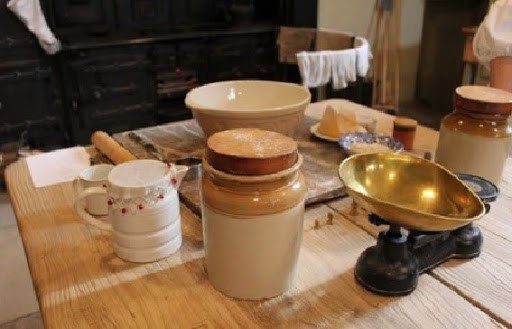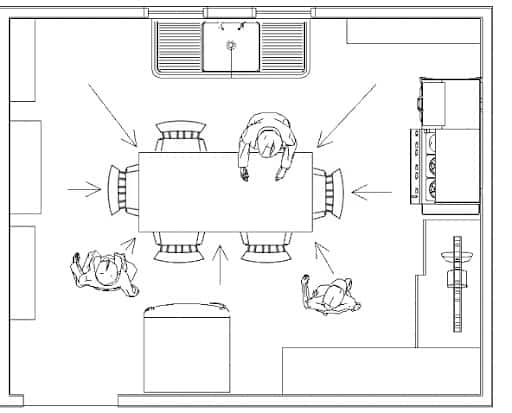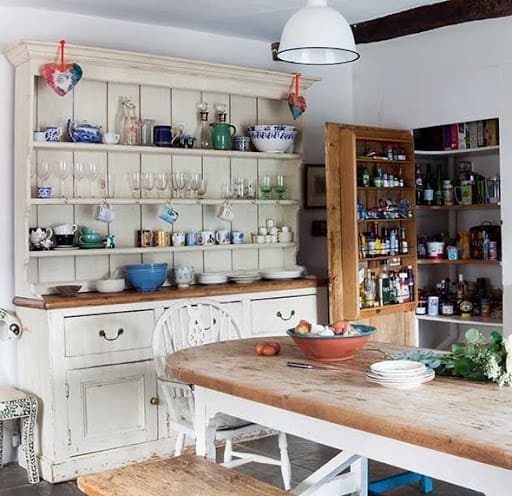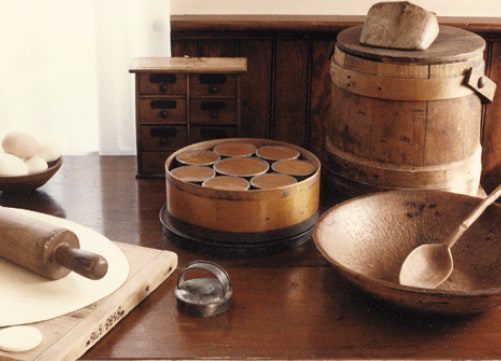Hi there my darlings!
I have recently been remodelling my kitchen and while searching for ideas I realized that the Victorian kitchens looked nothing like ours. The reason? Their needs were different, and there were so many more people in the kitchen then we are used to now!
So what did the Victorians’ kitchens look like?
The study of kitchen design and organization had its genesis in the Victorian period. The twin disciplines of home economics and domestic science began in the mid-19th century. Home economists formalized methods of maintaining a home that strove to remove folklore and custom from kitchen organization and replace it with planning based on rational analysis.

The Victorian kitchen cannot be easily understood apart from the technologies and the cultural and social trends of the day.
Technologies such as indoor plumbing, the kitchen stove and the icebox had an enormous influence on kitchen work and on how kitchens were outfitted and organized.
Social and cultural trends also had enormous impact. The demand for improved hygiene and sanitation influenced the materials and fixtures deemed suitable for the kitchen, and the push for better organization and time management sparked the beginnings of the science of home economics that helped homemakers make more efficient use of their kitchens.
The nearly 80 years of the Victorian/Edwardian Age from 1837 to 1914 were a period of unceasing innovation. There were huge breakthroughs in manufacturing, medicine, epidemiology, and chemistry throughout the Age. The Victorians, virtually unstoppable inventors, and tinkerers, introduced enhancements that we take for granted in today’s kitchen: cookstoves, refrigeration, running water and sanitary drainage — all major improvements over what had gone before.
The most impactful, at least in its effect on the development of the kitchen, was plumbing. Indoor plumbing allowed the sink to be brought into the house. Gone was the laborious process of hauling water in buckets for cooking and washing up.
Almost as important was the kitchen cookstove which replaced the iron kettle in an open hearth for cooking. First heated by wood or coal, early stoves were large, complex and dangerous but a huge improvement over the Colonial fireplace. Natural gas in the latter part of the 19th century made possible cookstoves that were safer and simpler to use, requiring much less maintenance.
Lastly, the icebox made it possible to store foods safely for longer periods, a capability that dramatically improved the American diet.
These innovations made the modern kitchen possible. Somewhat less direct but just as game-changing were commercial and industrial technologies for preserving, storing and transporting food.

For the whole of man’s history up to the mid-1800s, food had been eaten within a few miles of where it was grown. There were few ways of effectively preserving food for long periods, and almost no way to transport it long distances.
The Victorian period began to change that. It saw the beginning of the food industry, the national, and even international, food distribution system that moves perishable food from coast to coast, and preserves food not just for a season or two but for years and, sometimes, decades.
The Victorian kitchen was not, however, by any means a modern kitchen. It did not, for example, have electricity until very late in the period, and only in a few major cities. Far more importantly, however, its basic organizing principle was entirely different, which is why it really is not possible to recreate a Victorian kitchen just by installing some Victorian-looking cabinets and a few accessories. It takes an entirely new (or rather entirely old) approach to kitchen design.
Today’s kitchens are outwardly oriented. The center of the room is open. Working surfaces are arranged along the perimeter of the kitchen in the form of countertops. The cook moves from work area to work area on what the military calls “interior lines”. It is efficient but it is not Victorian.

The orientation of Victorian kitchens was just the opposite. The primary work surface was in the center of the kitchen — usually a large, heavy and sturdy table. The perimeter of the room held storage furniture, the cooking stove and the sink. A wide work aisle allowed access to the central work table from all sides. Movement around the kitchen, is on “exterior lines”. The chief advantage of this type of arrangement is that multiple cooks can work at the same time without getting in each other’s way. The Victorian kitchen was almost inevitably a multi-cook kitchen.
Preparing and cleaning up after meals was an “all hands” operation — or, at least, all female hands. Meals were the responsibility of the wife and daughters of the household. It took on average 44 hours a week to prepare, serve and clean up after meals. (Add to that the average 27 hours per week spent in house cleaning and laundry, and it is clear that the Victorian homemaker was a very, very busy person indeed).

With that much work required, being able to sit down while working was a necessity. In today’s kitchen most work is done standing but due to modern prepared foods with heat and eat simplicity, today’s cook spends just 4 hours on average per week on meal preparation.
Only a few families had hired cooks. Our modern perception (based apparently on old British movies) that anyone well-off enough to own a house was probably able to afford a cook is far from reality. In actual fact, according to the census records of the period, barely 25% of Victorian middle-class households had servants of any kind, and most of these were part-time.
Obviously, creating an inwardly-oriented Victorian kitchen requires a lot of space. We calculate that the minimum size for a Victorian kitchen is 11′ x 16′, larger is better. Luckily, most Victorian homes either have the space or can create the space with a little wall re-arranging.

The Unfitted Victorian Kitchen
A second major difference between the Victorian kitchen and kitchens of today is the absence of built-in cabinetry. Victorian kitchens were furnished, not fitted.
In modern kitchens cabinets are “fixtures” attached to the walls and floor. They form the work surfaces with storage conveniently located below in drawers and on shelves concealed by decorative doors.
In a Victorian kitchen cabinets were furniture, free-standing and movable. Work surfaces and storage were usually separate. Work surfaces were tables. Storage was in large cupboards supplemented with open shelves and hooks on walls and sometimes ceiling for pots and pans as needed.
There was not much to store in a Victorian kitchen, so storage was basic. Servingware and dishes would be stored on open shelves, pots and pan on hooks or overhead racks. There was very little need for food storage. The food to be consumed in a day was purchased, or picked, or slaughtered that day.
Only a very few staples were kept for more than a few days: flour, sugar, salt, and perhaps lard, baking soda, and some home-canned vegetables. Add to these the very few factory-processed canned goods and bottled sauces and condiments, and we have all of the food likely to be in a Victorian kitchen.

Fitted cabinets in a Victorian kitchen were just not needed. Were they needed the Victorians would certainly have invented them.
In a modern Victorian kitchen reproduction, however, some fitted cabinetry is almost inevitable — if only to provide a place to mount a dishwasher, it seems less fraudulent if it looks very much like furniture.I am so tempted to style my kitchen after a Victorian one… But would it be practical? I guess we shall see!
Let me know in the comments below!
Source: StarCraft Custom Builders
Written byHanna Hamilton!

 Share this book
Share this book